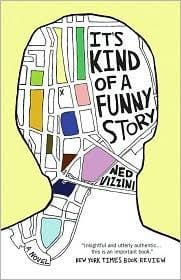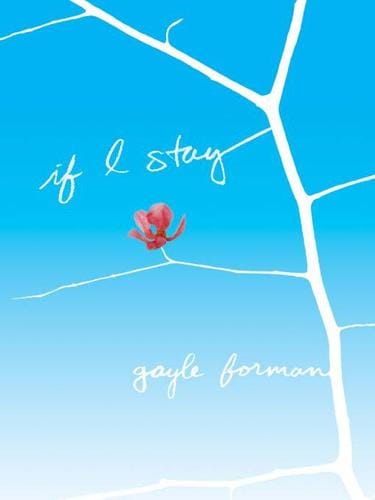Exploring 'It's Kind of a Funny Story': Book, Movie & Mental Health
A deep dive into Ned Vizzini's 'It's Kind of a Funny Story', covering plot, themes, mental health portrayal and why both the novel and film still matter today.

Introduction
When Ned Vizzini published It's Kind of a Funny Story in 2006, the young-adult novel quickly earned acclaim for its honest yet optimistic portrayal of adolescent depression. Drawing from the author’s own five-day hospital stay, the book blends sharp humor with raw emotion, making mental health conversations accessible to teens and adults alike. In 2010 the story leapt to the screen in a film adaptation starring Keir Gilchrist, Zach Galifianakis and Emma Roberts, introducing an even wider audience to Craig Gilner’s journey of recovery.
Plot Summary
The novel follows 15-year-old Craig Gilner, a gifted Brooklyn teenager who gains admission to the elite Executive Pre-Professional High School. What begins as a dream quickly spirals into anxiety, sleepless nights and suicidal ideation driven by academic pressure. One evening, overwhelmed and fearing he might act on harmful thoughts, Craig checks himself into a nearby hospital. Because the adolescent wing is under renovation, he is admitted to the adult psychiatric floor, where a five-day stay changes his perspective on life.
Inside Six North, Craig meets an eclectic cast of patients: the charismatic yet fragile Bobby, the self-harming Noelle, the artistic Muqtada and others who challenge his preconceived notions of who suffers from mental illness. Through group therapy, medication and the rediscovery of his love for drawing “brain maps,” Craig begins to identify the root causes of his depression and charts a healthier path forward.
Key Characters
Craig Gilner – A high-achieving teen grappling with perfectionism and self-worth. His first-person narration offers an intimate look at anxiety and recovery.
Noelle – A fellow patient battling self-harm who forms a tender connection with Craig, reminding readers that shared vulnerability can foster healing.
Bobby – A comedic yet deeply troubled father figure whose wisecracks conceal serious fears about life outside the ward.
Major Themes
Pressure Culture: The novel spotlights how competitive academic environments can amplify mental health struggles. Craig’s fear of failure illustrates the dark side of “gifted and talented” labels.
Identity and Purpose: By discovering his passion for art, Craig learns that success is not one-size-fits-all. Embracing creative expression becomes a lifeline.
Stigma vs. Community: The ward, initially seen as a last resort, proves to be a supportive micro-community. Vizzini argues that seeking help is a sign of strength, not weakness.
Mental Health Representation
Unlike many teen dramas that romanticize or gloss over depression, It's Kind of a Funny Story grounds mental illness in everyday reality. Craig’s symptoms—vomiting from anxiety, obsessive “tentacles” of worry, difficulty eating—mirror experiences shared by countless readers. At the same time, the narrative’s trademark humor prevents the subject matter from feeling hopeless. Jokes never undercut the seriousness; instead, they demonstrate how laughter can coexist with pain and act as a coping mechanism.
Clinicians often recommend the book to young patients because it depicts the full arc of a psychiatric stay: intake, stabilization, medication management, therapy and after-care planning. That holistic approach helps demystify hospitalization and reduces fear around seeking professional support.
About Ned Vizzini
Born in 1981, Ned Vizzini published essays in The New York Times Magazine before turning to fiction. His earlier novels, Be More Chill and Teen Angst? Naaah…, showcased a unique voice that mixed satire with sincerity. Tragically, Vizzini died by suicide in 2013, a reminder of the ongoing struggles even successful authors can face. His legacy continues through dedicated readers, mental health advocates and a Broadway adaptation of Be More Chill.
The 2010 Film Adaptation
Directed by Anna Boden and Ryan Fleck, the movie version condenses events into a single, visually vibrant narrative. While some subplots are trimmed, the film retains the novel’s central message: hope is possible, help is out there and creativity can be therapeutic. Zach Galifianakis delivers a nuanced performance as Bobby, walking a fine line between comic relief and emotional gravity. The soundtrack—featuring artists like Broken Social Scene—adds atmospheric depth, making the hospital ward feel both isolating and strangely liberating.
Though box-office numbers were modest, the film enjoys a devoted fan base on streaming platforms. For many viewers, it serves as an entry point to the book and to broader conversations about adolescent mental health.
Why the Story Still Resonates
Nearly two decades after publication, It's Kind of a Funny Story continues to circulate in classrooms, book clubs and therapist waiting rooms. The rise of social media and pandemic-related stressors have only intensified the pressures Craig once felt. Readers find solace in recognizing their own “tentacles” and in seeing a protagonist choose life, vulnerability and community over silence.
The narrative also empowers friends and family members to spot warning signs of depression. By normalizing therapy and medication, it helps erode lingering stigmas that prevent people from reaching out.
Conclusion
It's Kind of a Funny Story is more than a compelling coming-of-age tale; it is a lifeline wrapped in witty prose. Whether you encounter Craig’s journey on the page or the screen, the takeaway is clear: asking for help is brave, recovery is possible and every story—even a funny one—deserves to be heard.



